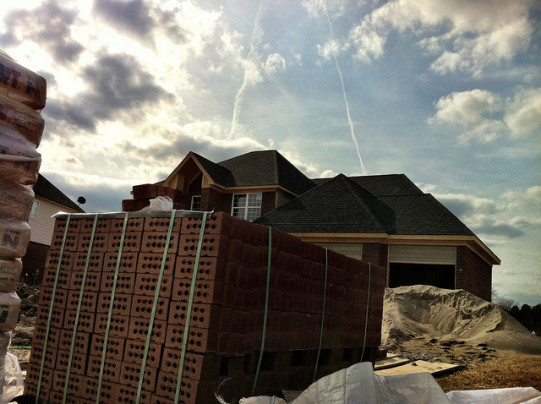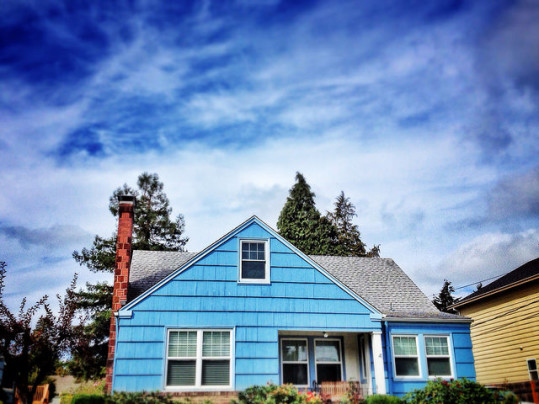A new survey of mortgage lenders finds increasing optimism about the outlook for mortgage demand and credit availability in the months ahead. The results of Fannie Mae’s first quarter 2015 Mortgage Lender Sentiment Survey show that senior mortgage executives across the country have a more positive view compared with the previous quarter or the year before. In fact, more respondents said they expect mortgage demand to grow over the next three months and the share of lenders reporting that credit is easing is now higher than the share that say it’s tightening. Doug Duncan, Fannie Mae’s chief economist, said the results mirror those of the American public, who have been expressing increased optimism about the economy and housing market in recent months. “The first quarter results mirror a similar trend among American households, as shown in our recently released National Housing Survey data,” Duncan said. “These results are consistent with our view that an improving economy, strengthening employment, and increasing consumer confidence should support a modest housing expansion in 2015, after an uneven and disappointing year for housing activity in 2014.” More here.
Archive for March 2015
Latest Survey Finds Mortgage Rates Down
According to the Mortgage Bankers Association’s Weekly Applications Survey, average mortgage rates fell last week across all loan categories, including 30-year fixed-rate loans with both conforming and jumbo balances, mortgages backed by the Federal Housing Administration, and 15-year fixed-rate loans. Last week’s drop follows an increase the previous week that slowed total mortgage application demand. But despite the fact that average rates fell last week, demand was still down, according to the most recent survey. In fact, the Market Composite Index – which measures both refinance and purchase activity – slipped 3.9 percent from one week earlier. The decline included a 5 percent decrease in refinance demand and a 2 percent dip in the number of people seeking a loan to purchase a home. After falling again last week, refinance demand reached its lowest level since October of last year. The MBA’s weekly survey has been conducted since 1990 and covers 75 percent of all retail residential mortgage applications. More here.
Construction Decline Likely A Temporary Setback
New estimates released by the U.S. Census Bureau and the Department of Housing and Urban Development show privately owned housing starts – which measure the number of new homes that began construction during the month – fell in February. The 17 percent plunge brought construction levels to their lowest point in a year. But, despite the decline, many real estate analysts say the drop is only a temporary setback, mostly due to the harsh winter weather that battered much of the country during the month. In fact, regional data shows that new residential construction dropped 56.5 percent in the Northeast and 37 percent in the Midwest, both areas where bitterly cold conditions lingered for much of February. On the other hand, the number of permits authorized to build new homes rose 3 percent from the month before. Permits are generally a good indicator of future new home construction and last month’s increase may be evidence that construction activity will rebound from February’s slowdown in the months ahead. More here.
Builders Remain Confident In Market For New Homes
Builder confidence slipped two points in March, according to the National Association of Home Builders Housing Market Index. The index measures builders’ perception of the market for new homes on a scale where any number above 50 indicates more builders view conditions as good than poor. Despite the drop, however, the index remains in positive territory at 53. David Crowe, the NAHB’s chief economist, said the decline in confidence is largely due to supply chain issues, including lot and labor shortages. But Crowe expects the market to overcome these issues based on renewed strength in the economy. “We are expecting solid gains in the housing market this year, buoyed by sustained job growth, low mortgage interest rates, and pent-up demand,” Crowe said. And a closer look at the numbers reveals most builders agree with Crowe. In fact, among the three components of the index measuring current buyer traffic, current sales, and sales expectations for the next six months, only the gauges of current conditions fell, while expectations for future sales remained unchanged from the month before at 59. This indicates that, though builders may have had a slow winter, most are expecting the market to improve during the spring and summer seasons. More here.
Millennial Buyers Make Up Bulk Of Home Sales
According to new data from the National Association of Realtors, Americans age 34 and younger made up the largest group of home buyers in the past year. In fact, millennials accounted for 32 percent of all buyers, which was up 1 percent from the year before. Buyers between the ages of 35 and 49 were the second largest group at 27 percent. But, despite being the largest group of recent buyers, younger Americans have been less active in the housing market over the past few years compared to historical norms. This, according to Lawrence Yun, NAR’s chief economist, is about to change. “Even though the share of first-time buyers has fallen to its lowest level since 1987, young adults in general are more mobile than older households,” Yun said. “The return of first-time buyers to normal levels will eventually take place in upcoming years as those living with their parents are likely to form households of their own, first as renters and then eventually as homeowners.” As the millennial generation enters its peak buying years, Yun expects them to represent an even larger percentage of total home purchases. Historically, the number of first-time home buyers has been closer to 40 percent. More here.
Gov’t Report Finds Strengthening Housing Market
Each month, the U.S. Department of Housing and Urban Development and the U.S. Department of the Treasury release a housing scorecard which collects key data on the housing market’s health and the results of the administration’s mortgage modification and foreclosure prevention efforts. According to the most recent release, the market is on a strong trajectory with many key indicators showing significant progress. For example, new home sales in January remained at a nearly six year high and were 5.3 percent higher than a year earlier. Also, home price increases continue to moderate, indicating that home prices are stabilizing after experiencing sharp gains in the years since the housing crash. Among the other encouraging news, foreclosure starts continue to trend downward and mortgage rates remain historically low. But though there has been reason for optimism following a number of encouraging economic and housing reports near the end of last year and the beginning of this one, the report cautions that there is still work to be done in order to help more Americans realize their dream of homeownership. It also notes that existing-home sales were down in January, though some of the decline was likely due to severe winter weather in some parts of the country. More here.
Demand Slows As Mortgage Rates Rise
According to the Mortgage Bankers Association’s Weekly Applications Survey, mortgage rates rose across all loan categories last week, including 30-year fixed-rate loans with both conforming and jumbo balances, mortgages backed by the Federal Housing Administration, and 15-year fixed-rate loans. The increase caused refinance demand to slow. In fact, refinance activity fell 3 percent from the week before and was just 60 percent of total mortgage activity. Still, the seasonally adjusted purchase index rose 2 percent and is now 2 percent above year-before levels. Also in the report, among purchase applications, the average loan size hit an all-time high last week, rising to $294,900. This indicates that the high-end of the market is least affected by mortgage rate increases and remains the strongest segment of the residential real-estate market. However, industry analysts expect a boost in the number of first-time buyers this year, which would help balance the market and bring the average loan down. The MBA’s weekly survey has been conducted since 1990 and covers 75 percent of all retail residential mortgage applications. More here.







